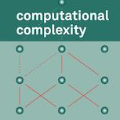Autonomous systems with uncertainties are prevalent in robotics. However, ensuring the safety of those systems is challenging due to sophisticated dynamics and the hardness to predict future states. Usually, a classical motion planning method considering all possible states will not find a feasible path in crowded environments. To overcome this conservativeness, we propose a density-based method. The proposed method uses a neural network and the Liouville equation to learn the density evolution, and by applying a gradient-based optimization procedure, we can plan for feasible and probably safe trajectories to minimize the collision risk. We conduct experiments on simulated environments and environments generated from real-world data and outperform baseline methods such as model predictive control (MPC) and nonlinear programming (NLP). While our method requires planning time in advance, the online computational complexity is very low when compared to other methods.
翻译:具有不确定性的自主系统在机器人中很普遍。然而,由于复杂的动态和难以预测未来状态,确保这些系统的安全具有挑战性。通常,考虑到所有可能的状态的经典运动规划方法不会在拥挤的环境中找到可行的路径。为了克服这种保守性,我们提出了一个基于密度的方法。拟议方法使用神经网络和Liouville方程式来了解密度的变化,并通过采用基于梯度的优化程序,我们可以规划可行和可能安全的轨迹,以尽量减少碰撞风险。我们对模拟环境以及来自现实世界数据的环境进行实验,并对模型预测控制(MPC)和非线性编程(NLP)等超效基线方法进行实验。 虽然我们的方法需要提前规划时间,但与其他方法相比,在线计算的复杂性非常低。




